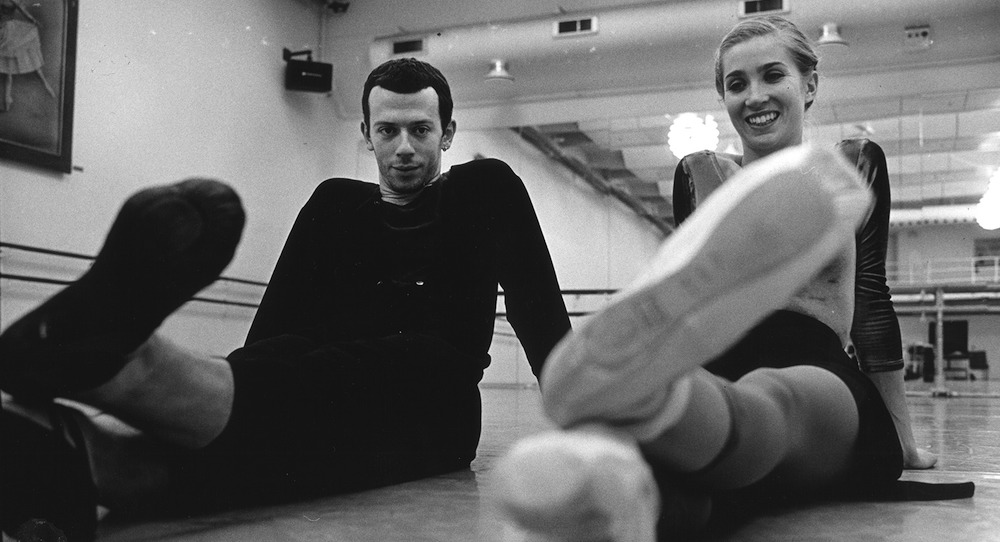Book: The Boy from Kyiv: Alexei Ratmansky’s Life in Ballet.
Author: Marina Harss, Macmillan Publishers, October 2023.
Marina Harss’s The Boy from Kyiv: Alexei Ratmansky’s Life in Ballet is a fascinating, intimate look at the life and works of one of the top choreographers of today, Alexei Ratmansky. It is extensively researched and detailed. It is a large book (just under 500 pages ), divided into five parts with 28 chapters, a prologue, epilogue, footnotes at the back and an index, as well as some photos.
It is mostly written chronologically and follows Ratmansky’s life and career. Art and politics at times are mixed. We learn about his training at the Bolshoi Ballet Academy, his work style and how he creates a ballet. Some of the various different dance styles and influences in Ratmansky’s works are discussed – for instance, various museums, literature, music, film, Jewish folklore and modern art. It is also stressed how challenging and demanding his works can be for the dancers.

Ratmansky has been Artistic Director of the world renowned Bolshoi Ballet, and then artist in residence first at American Ballet Theatre (ABT) and now New York City Ballet (NYCB). He has also been extremely busy visiting various other companies (e.g. The Mariinksy, The Royal Ballet, The Royal Danish Ballet, NYCB, ABT and the Paris Opera). In some ways, it is a question of what companies has he not worked with! For us Aussies, there are mentions of David Hallberg, Mana Gielgud and Paul de Masson, and he created a Cinderella for The Australian Ballet in 2016. His works are both narrative and plotless, abstract, exacting, and displaying the clean line and use of immaculate ballet technique. We also read about how he has blended Eastern and Western ballet traditions to create an unexpectedly diverse and dynamic series of works that might perhaps challenge and transform the dance world.
Ratmansky now specifically identifies as Ukrainian although living abroad.
Born in Kyiv of a Russian mother and a Ukrainian father, at the age of 10, he started training in Moscow at the Bolshoi Ballet Academy, far away from his parents. Ratmansky’s mother’s best friend from childhood, Lia, and her husband, lived in Moscow and cared for young Alexei.
He has created almost 30 ballets, including at least two full-length pieces. Harss details Ratmansky’s dancing career with the National Ballet of Ukraine, where he performed “from the start of perestroika to the dissolution of the Soviet Union in 1991 and saw him touring to Western Europe, Japan, Canada and Mexico; followed by the Royal Winnipeg Ballet, where he was promoted to principal dancer; and The Royal Danish Ballet.”
He also met his wife in Kyiv, fellow dancer Tatiana Kilivniuk, a Ukrainian who shares his love of travel. In 1992, Ratmansky began working for the Royal Winnipeg Ballet, and Tatiana would join a year later.

In Canada, Ratmansky began in earnest his study of Western ballet, music, style and culture, especially August Bournonville and George Balanchine but also several others. In 2013, he had a month’s leave and used the time to peruse over 100-year-old manuals of dance notation, trying to decipher the cryptic lines and dots that had once represented ballet steps and musical notes. This was using the Stepanov notation for Petipa works. (In contemporary times, the two main systems are Benesh and Laban, but now the use of video has mostly taken over.) The systems generally use a musical stave and markings for the various dance positions but are often hard to decipher.
After Winnipeg, Ratmansky freelanced across the former Soviet Union, and then a prolonged stretch with The Royal Danish Ballet, where he soaked himself in the Bournonville style. In addition to Balanchine, he danced in works by John Neumeier and Maurice Béjart, but was disappointed not to be cast in William Forsythe’s ballets. Alexei and Tatiana’s son, Vasily, was born in Copenhagen, and life was comfortable, although he and Tatiana felt underused as dancers.
When Ratmansky brought The Bright Stream to New York in 2005, he became a major celebrity. Concerto DSCH has also been a major hit.
The book ends with Ratmansky’s announcement of his support for the Ukraine and the harrowing separation from his loved ones there, and also the devastation of the war.
The Boy from Kyiv is a detailed, delightful and most intriguing book.
By Lynne Lancaster of Dance Informa.















